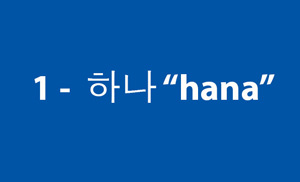Taekwondo 태권도Taekwondo Preschool
Promotion from one geup to the next can proceed rapidly in some schools, since schools often allow geup promotions every two, three, or four months. Students of geup rank learn the most basic techniques first, and then move on to more advanced techniques as they approach first dan. Many of the older and more traditional schools often take longer to allow students to test for higher ranks than newer, more contemporary schools, as they may not have the required testing intervals. View Taekwondo belt levels »

American Taekwondo Association (ATA)
Two of the most popular systems of taekwondo are named solely after their respective organizations: the World Taekwondo (WT) and the International Taekwon-Do Federation (ITF).
The American Taekwondo Association (ATA) was founded in 1969 in Omaha, Nebraska by Haeng Ung Lee of South Korea. It is one of the largest taekwondo organizations in the United States, and in association with the Songahm Taekwondo Federation (STF) and World Traditional Taekwondo Union (WTTU), is one of the largest in the world, claiming a membership of 350,000. The ATA is currently headquartered in Little Rock, Arkansas.
ATA-affiliated schools also host self-defense seminars to teach techniques for emergency escape from an attacker. However, ATA is not true taekwondo, it´s an american version of the real korean martial art.
Songahm Taekwondo
Songahm Taekwondo is the style of martial arts practiced at ATA affiliated schools. Songahm means "Pine Tree and Rock." According to the organization, the term Songahm itself represents "Evergreen strength the year round, long life and a symbol of unchanging human loyalty" as represented by the pine tree and the rock. Soon Ho Lee gave the name, Songahm, and its meaning to his brother, Haeng Ung Lee years before H.U. Lee founded the ATA. In the ATA, the student is compared to a growing pine tree, from a seed (white belt) to a massive tree (black belt).
According to the ATA, practitioners of Songahm Taekwondo study poomse (forms, a preset combination of offensive and defensive techniques, designed to simulate self-defense techniques being used upon multiple opponents), sparring ( 겨루기 gyeorugi ), one-steps (scripted sparring segments), self-defense ( 호신술 hosinsool ), board breaking ( 격파 gyeokpa ), weapons, and leadership. The ATA has a leadership program that allows students to work as junior leaders/instructors in junior classes. This helps the trainee instructors become qualified taekwondo instructors and earn the ATA title of Certified Instructor.
Belt and Rank System
The American Taekwondo Association uses a rank system divided into two series: the colored belt series, and the black belt series. The purposes of a rank system include establishing a chain of command, and measurement of student progress. Each series has nine ranks within it due to the significance of the number nine as the highest attainable goal of a measurable endeavor in oriental culture.
According to the ATA each belt has a symbolic meaning that compares the student's growth in taekwondo to the growth of a pine tree:
- White Belt - "Pure and without the knowledge of Songahm Taekwondo. As with the Pine Tree, the seed must now be planted and nourished to develop strong roots."
- Orange Belt - "The sun is beginning to rise. As with the morning's dawn, only the beauty of the sunrise is seen rather than the immense power."
- Yellow Belt - "The seed is beginning to see the sunlight."
- Camouflage Belt - "The sapling is hidden amongst the taller pines and must now fight its way upwards."
- Green Belt - "The pine tree is beginning to develop and grow in strength."
- Purple Belt - "Coming to the mountain. The tree is in mid-growth and now the path becomes steep."
- Blue Belt - "The tree reaches for the sky towards new heights."
- Brown Belt - "The tree is firmly rooted in the earth"
- Red Belt - "The sun is setting. The first phase of growth has been accomplished."
- 1st Degree Black Belt Recommended (half red and half black in appearance) - "The dawn of a new day. The sun breaks through the darkness."
- 1st Degree Black Belt - "The tree has reached maturity and has overcome the darkness. It must now begin to 'plant seeds for the future.'
- 2nd Degree Black Belt - "With your noble character, you will develop a new permanence in life."
- 3rd Degree Black Belt - "Peace of mind and tranquility."
- 4th Degree Black Belt - "Crest of granite mountain."
- 5th Degree Black Belt - "Mastered all kinds of knowledge and utilizes this to do many things."
- 6th Degree Black Belt - "Long Life."
The use of nine levels in the colored belt and black belt systems, is rooted in Korean numerology and has been explained by General Choi (nine is an important number in Korean culture). The increased number of smaller goals provided by nine levels of colored belt rank was designed "for added motivation by giving many short term goals to achieve and eliminating having to remain in a single color for several months at a time" and likely satisfies the need of many American students for immediate gratification.
Each rank from orange belt to second degree black belt may be held either as a Recommended (R) or Decided (D) rank. The "decided" rank is a half step above the "recommended" rank. Some schools denote this rank with a piece of black tape around the end of the belt hanging on the student's right side. At promotional rank testings, students may receive a "Full Pass," "Half Pass," or "No Change."
For recommended black belt ranks, the student is required to successfully pass testing for their next decided rank with 6 months of achieving their current recommended rank. Failure to do so would result in the student being returned to their next lowest decided rank (Example. a 2nd degree recommended would be returned to 1st degree decided).
The honorary rank of 10th degree black belt, styled "Eternal Grand Master", was bestowed upon Haeng Ung Lee following his death in 2000. The rank was sponsored and awarded by Grand Masters of other major martial arts, may of who attended Haeng Ung Lee's funeral.
Mastership
Upon attaining the rank of 6th degree black belt, the next step is earning the mantle of "Master Instructor"; this is not automatic. A 5th degree may only test for 6th degree at the Songahm Taekwondo World Championships, held in Little Rock, Arkansas each June. The new 6th degree will have new criteria which must be met in order to apply for Mastership and cannot be awarded until Worlds the following year. Similarly, there is a minimum period of a year between earning a 7th degree and the Senior Master title, as well as 8th degree and the Chief Master title. Although it may go unsaid, there can only be one Grand Master that holds the 9th degree black belt rank at a time. As for other ranks below 9th degree black belt, there can be multiple people that can hold the same rank.
Tiny Tigers
The Taekwondo for Tiny Tigers program for preschool students (2-6) uses patches with animals on them instead of black stripes on the belt to denote the half step graduations: Tiger for orange belt; Cheetah for yellow belt; Lion for camo belt; Eagle for green belt; Phoenix for purple belt; Dragon for blue belt; Cobra for brown belt; and Panther for red belt.
Franchise locations often utilize full-length color stripes in belts to signify the various rank. White, Orange, Yellow, Camo, Green, Purple, Blue, Brown, Red and Black stripes run along the center of the belt from one end to the other. These locations may also utilize black wrapped stripes around one end to signify "time-in-grade" or "Degree of Rank" with advancement to the next belt color after obtaining five (5) stripes or 'degrees'.
Forms
A form (poomse) is a series of kicks, blocks and other techniques put together in a set pattern. The pattern becomes more complex as students progress through the ranks. For example, the 9th grade white belt form contains eighteen moves. The 5th grade green belt form has 34 moves, the 1st degree black belt form has 81 moves, and the 9th degree black belt form has 99 moves. If all of the forms (eighteen in all) are done in sequence, they form the pattern of a nine pointed star (eight outer points plus a center point) referred to as the Songahm Star. According to the ATA, when the outer points of the Songahm star are connected, they form a circle which exemplifies complete balance. The ATA teaches that forms create a contextual application for new material learned at each belt level.

Related Articles
Original Taekwondo Kwans ( 관 )
In addition to these private organizations, the original taekwondo schools ( 관 kwans ) that formed the organization that would eventually become the Kukkiwon 국기원 continue to exist as independent fraternal membership organizations that support the World Taekwondo (WT) and the Kukkiwon 국기원. The official curriculum of the kwans is that of the Kukkiwon 국기원. The kwans also function as a channel for the issuing of Kukkiwon dan and poom certification (black belt ranks) for their members. View Taekwondo Kwans ( 관 ) »
RESOURCES
This article uses material from the Wikipedia article "American Taekwondo Association", which is released under the Creative Commons Attribution-Share-Alike License 3.0.






















